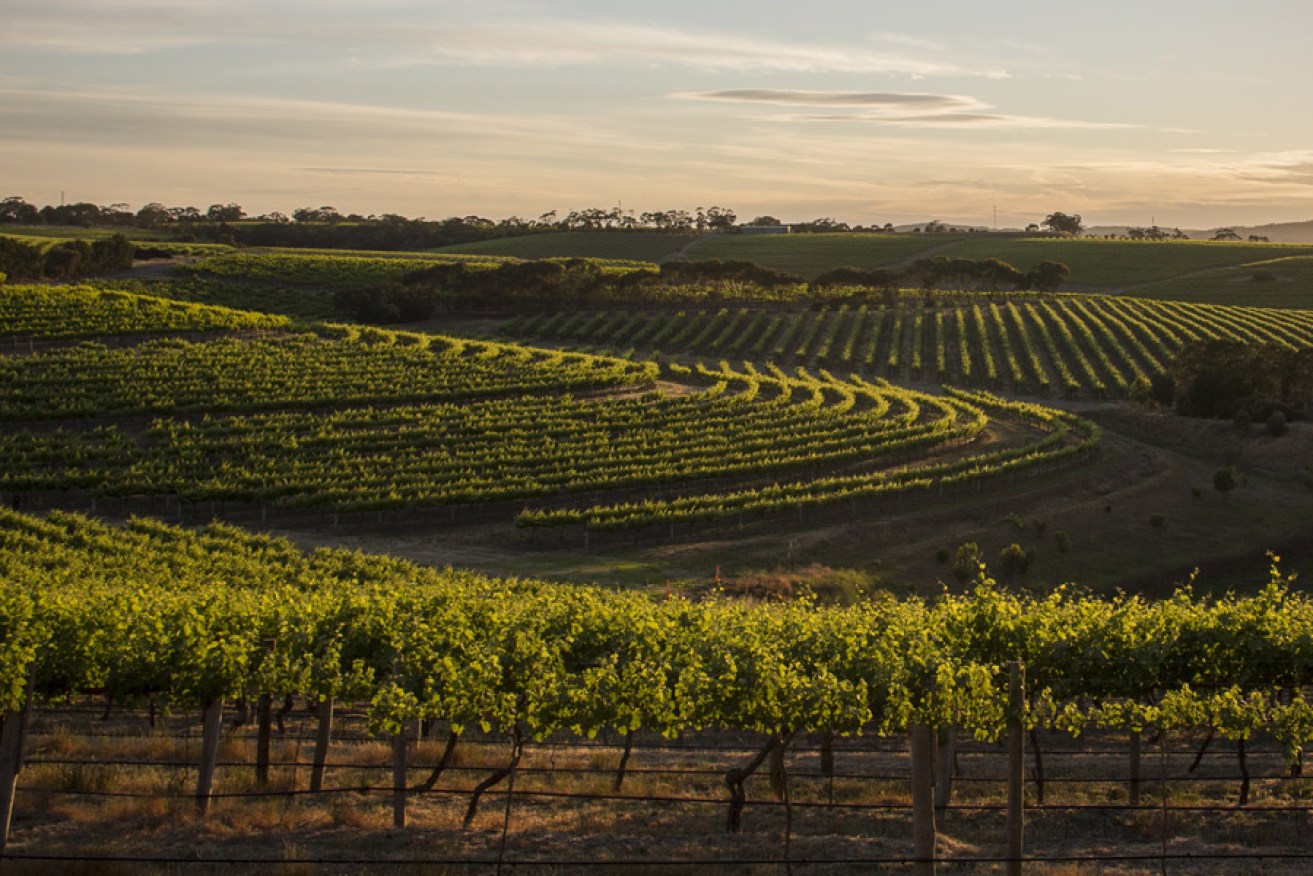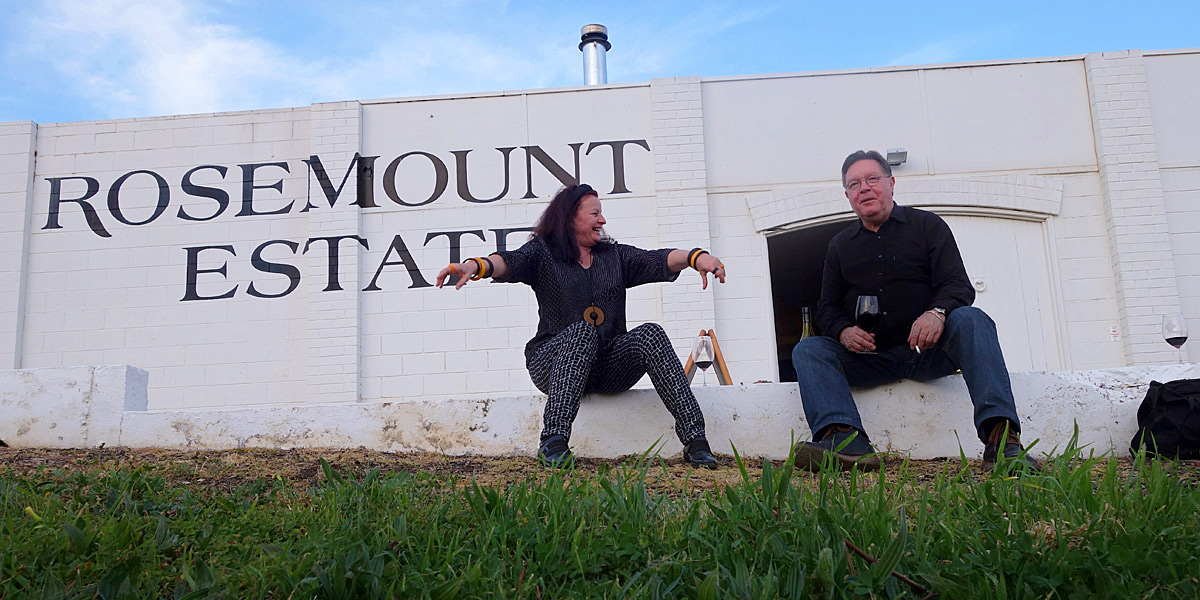Vales winery closure a kick in the teeth


TWE's winemakers love the McLaren Vale grapes. Photo: AAP
So the mighty Treasury Wine Estates (TWE) withdraws immediately from winemaking in McLaren Vale? Shuts its Rosemount refinery?
Hardly surprising, given the fact that TWE had been quite deliberately shrinking the role played by its shiny 20,000-tonne-capacity Rosemount tankfarm. Over recent years, it has been quietly sending fruit instead to local contract processors or to its huge installations at the Wolf Blass Bilyara and Penfolds wineries at Nuriootpa in the Barossa.
What does this mean for McLaren Vale?
Of course it means the loss of a few dozen precious jobs in the Vales. Mates and neighbours. Good people with kids and mortgages. Hardworking, respected winemakers and cellar hands who annually clean up a hoard of trophies at the local wine show after making the huge tanksful of fine commercial wine for their owners.
Presuming Treasury retains its love of soulful McLaren Vale reds, the Rosemount closure also means a lot more trucks full of grapes thundering through the village to the Southern Expressway/western-suburbs/Northern Expressway route to the Barossa, just for starters.
More scary is the thought of them taking the back track through Kangarilla to the treacherous Hills routes and into the Barossa through the sleepy main street of Angaston.
It seems that Treasury hasn’t quite begun to grasp the international move to buy local.
It was immediately telling that the Treasury press release called the Rosemount facility Ryecroft, a name hardly uttered since Rosemount founder Bob Oatley bought the super-premium but modestly-scaled winery in 1991, rebranded it Rosemount and built a huge tank farm. This propaganda worked: yesterday, nearly every news outlet blindly repeated the press release, and called it the Ryecroft winery.
Hardly a name on everybody’s lips, Ryecroft. Rosemount, meanwhile, hangs in there.
Speaking of names you don’t see anymore, Treasury says it will maintain its cellar sales and tasting bench at the old Seaview Winery on Chaffey’s Road below Chapel Hill. While it hasn’t actually made any wine for years, this currently has Rosemount painted on its facade. The big old joint has been long overdue for some restorative care and cleaning-up. Regardless, its dedicated staff runs tasteful art exhibitions, and it remains the front-of-house for those locally made Rosemount Show Specials mentioned above.

The surviving Rosemount tasting room at the old Seaview Winery: Artist Annabelle Collett and photographer Bryan Dawe at a recent exhibition.
But the shut-down of the McLaren Flat/Ryecroft/Rosemount processor still delivers another kick in the teeth for your actual Rosemount, which will once again have no real branded home. Rosemount, that great Chardonnay and Shiraz producer which led Australia’s export boom in the ’90s. Rosemount, whose initial super-premium vineyard, Roxburgh, is now another stinking Hunter Valley coal pit. Rosemount, for which Southcorp paid, in 2001, a contentious $1.49 billion before that outfit was swallowed for a disastrous spell by Fosters before becoming Treasury Wine Estates.
Treasury is McLaren Vale’s biggest wine grower, with more than 1000 acres (405ha) under vine. It has about 1000 extra acres elsewhere on the Fleurieu Peninsula, mainly at Langhorne Creek. Its winemakers also quietly love the quality the best independent growers produce, with folks like the Oliver family of Taranga regularly making the coveted Grange cut after growing grapes on the same Seaview Road property for 174 years.
While locals seemed to like Treasury finally signposting its Vales vineyards as its own property, with handsome Penfolds livery, it didn’t make itself any friends when it used creosote-treated trellis posts in its new vineyard on the precious Kurrajong geology at Willunga: the neighbours’ vineyards now stink of this toxin.
Rosemount had gradually cut its McLaren Vale processing back to less than 10,000 tonnes in recent years, a bit over half of which came from Langhorne Creek. Apart from what it grows itself in the Vales, about 4000 tonnes, it buys around 4500 to 5000 tonnes from other growers. Much of this, especially the super-premium stuff destined for Penfolds, has been trucked directly north for years.
Peter Taylor, TWE’s director of wine production for Australia and New Zealand, said: “This decision was not made lightly … [It] was an extremely difficult one and is certainly not a reflection on the experience or capability of the team working there.
“This is a tough but necessary action that TWE has to take. We have several wineries within our production footprint and need to ensure that they operate at the highest possible capacity to maximise the efficiencies of our network. Unfortunately, Ryecroft has been operating at around half its capacity for several years now, and it is simply not sustainable for this to continue,” he said, almost as if that gradual cutback had happened by accident.
“Rosemount wines previously made at Ryecroft will continue to source their fruit from McLaren Vale and surrounding regions; the only change is the location where the wine will be made.”
TWE is, of course, a major fee-paying constituent of McLaren Vale Grape, Wine and Tourism. Marc Allgrove, consultant CEO of that body, said: “Today’s decision by Treasury Wine Estates to close its local production facilities is a commercial one made by a commercial enterprise operating in very difficult market conditions. It is clearly unwelcome news for the McLaren Vale community and our thoughts are with those impacted by the decision.
“Treasury Wine Estates, through its Rosemount Estate brand, local land holdings and regional grower base, is a key member of the community, and the association looks forward to its ongoing commitment to McLaren Vale’s efforts to promote its wine, food, people and destination.”
Perhaps the most significant future possibility involves Coles and Woolworths both searching for the definitive generic national wine brand, and a convenient place to process such fruit. This is conjecture. But Woolies already owns the region’s biggest contract bottling line, Vinpac, beside the Woodstock winery in Douglas Gully, just a few minutes from the former Rosemount. It has taken an increasing hold over the Barossa, buying its own vineyards there and planning to extend its big Chateau Dorrien winery at Tanunda. A few years back it bid for the flash new Barossa Valley Estates winery at Marananga/Seppeltsfield, but failed. It has recently bought the block adjacent to Chateau Dorrien for expansion space.
While it owns the McLaren Vale Vinpac, Woolies does not own the land there.
If, however, it were to buy the Ryecroft/Rosemount facility, with its land, Woolies would have ample space to relocate the bottling hall and purchase cheaply the little-known Ryecroft brand, with its history, which is older than Rosemount’s.
McLaren Vale insiders have enjoyed joking that the biggest difference between the Vales and the Barossa is simple: the Barossa is Woolies country; McLaren Vale is not. They may soon be forced to eat those words.
Or drink them, whether they bear the Rosemount tag or not. As the Rosemount winery is now shut, its value has fallen. But in its press statements, the TWE team may have quietly added a little value to the name Ryecroft. It has, in a strange manner, relaunched it.




